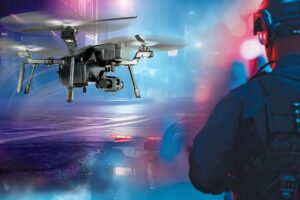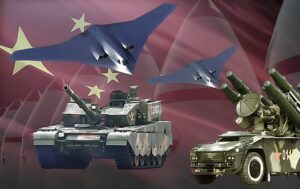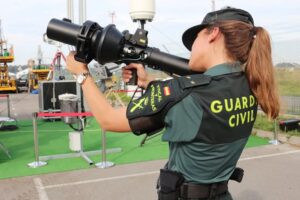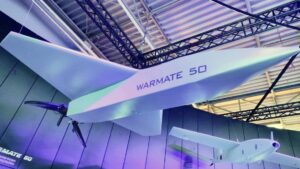Here’s the 4th opus of our Sublime Marseille series!
The post Sublime Marseille, Opus 4 video is Live ! appeared first on DRONESTAG.
Here’s the 4th opus of our Sublime Marseille series!
The post Sublime Marseille, Opus 4 video is Live ! appeared first on DRONESTAG.
The DJI Neo drone might just be the Chinese drone maker’s most beginner-friendly, accessible drone yet.
At just 135 grams, it’s ultra-portable (not to mention, it’s exempt from most types of drone regulations). It’s designed for palm takeoff and landings, made safer through fully-covered propeller guards. And at less than $200, it’s ridiculously affordable.
And it comes at a compelling time. Just last month, another (somewhat similar) pair of drones hit the market from competitor ZeroZero Robotics: the HoverAir X1 PRO and HOVERAir X1 PROMAX drones. Like the DJI Neo drones, those two are also hand launch, follow-me drones.
And like most things in the drone industry, DJI undercuts them on price. The cheapest drone in the ZeroZero Robotics lineup is the $349 HoverAir X1. The DJI Neo is $150 cheaper at a wildly-accessible $200.
To put that into perspective, had the DJI Neo launched in 2013 (that’s when DJI’s first consumer drone, the DJI Phantom launched), it could (in theory) have cost an inflation-adjusted $148.13.
DJI announced the Neo drone on Sept. 5, 2024. It’s shipping as of that date for some customers in certain countries outside the U.S. However, drones aren’t expected to ship in the U.S. until Oct. 6 (meaning you shouldn’t expect them to arrive until about Oct. 8).
Here’s everything else you need to know about DJI’s most affordable drone yet, and how it compares to others on the market:
This little drone has fairly decent (albeit not top-tier) specs, in a tiny form factor. Here’s what you need to know:
Weight: 135 grams. This is DJI’s smallest drone yet. Drones under 250 grams are a big deal not just for easy portability, but perhaps more importantly because many types of federal drone regulations do not apply to drones under 250 grams.
In the U.S., drones under 250 grams do not need to be registered with the FAA for recreational operations. Additionally, drones under 250 grams do not need to be Remote ID compliant.
Flight time: 18 minutes. This is lower than most DJI drones. DJI’s other drones under 250 grams have about 30 minutes of flight time, so this is a significant downgrade. But, it’s a marginal improvement from the similarly-sized HOVERAir X1 PRO and HOVERAir X1 PROMAX drones, which offer 16 minutes of flight time.
Propeller guards: Taking on the form factor of many toy drones and others like the HOVERAir drones, the DJI Neo drone has propeller guards, adding another safety element. That also allows it to function well as not just an outdoor drone but an indoor drone too (those propeller guards can go a long way in not dinging up your walls).
The DJI Neo camera is pretty decent, offering 4K video. It’s hardly DJI’s best camera drone, but it’s impressive for the price. Here are its camera specs:
Rather than the 3-axis gimbal that many drones feature, this smaller drone uses just a single-axis mechanical gimbal. Though a 3-axis gimbal is generally better than a single-axis gimbal, DJI makes up for it by leaning into stabilization tech. Its two stabilization algorithms, RockSteady and HorizonBalancing, reduce image shake and correct horizon tilt within ±45° for certain accessories (and ±30° with the DJI Fly app).
Plus, the drone offers all those same smart videography features you’ve come to expect, including AI subject tracking and QuickShots. Those six intelligent shooting modes are:
The post-filming process is a key example where DJI’s years of experience in building up consumer-friendly workflows comes in.
The DJI Neo has 22GB of internal storage, which means it can save either up to 40 minutes of 4K/30fps video or 55 minutes of 1080p/60fps video on the drone itself — no memory card needed.
And once saved, don’t worry about fiddling with cables to connect the drone to your phone or computer. Simply connect your phone by Wi-Fi to transfer your footage to the DJI Fly App. From there, you can edit in the app (the app has a pretty robust set of templates, sound and image effects), or transfer to other editing software of your choice.
And leaning into features offered by competitors like ZeroZero Robotics, DJI Neo now records sound. Well, not the drone itself (otherwise it would mostly be propellers whirring). When the drone is flying, you can also app to record audio through your smartphone via the DJI Fly app, syncing the audio track with your drone’s footage.
DJI has worked to remove propeller noise through an algorithm that can detect that sign and effectively delete it. And should you want even higher-quality audio, you can connect DJI Mic 2 through a Bluetooth connection.

Though I haven’t flown DJI Neo myself, it sounds as though the flying experience on the DJI Neo has been optimized as DJI’s most beginner-friendly drone yet. You’ll simply press a button that sends the video out into your desired shooting mode from the palm of your hand.
Now here’s the kicker. The $200 price tag does not include a remote control — and DJI wants you to fly it without one. With this hand launch drone, DJI wants you to allow the drone to do all the filming on its own.
You simply select what you want the drone to do, whether that’s something like following you, or flying a perfect circle around you, or starting with your face in the center and then zooming out. But the drone actually takes care of everything.
Once it’s taking the shot you requested for, it can return to the palm of your hand.
The drone should work well both indoors (given its small size and propeller cages) and outdoors. It can fly in up to Level-4 wind conditions, which is considered a moderate breeze.
That said, the DJI Neo drone can work with a remote control — though you’ll have to buy that separately. It also works with other DJI accessories such as the RC Motion and DJI Goggles. When combined with the DJI RC-N3, you can control DJI Neo as far away as its maximum video transmission distance of 10 kilometers.
DJI Neo is compatible with:
Should you not want extra accessories, the easiest route is to control DJI Neo is by using virtual joysticks through the DJI Fly app. With that though, you can only control the drone as far away as 50 meters.
It can even function through voice control.
Kind of. It can definitely latch onto subjects and track them. But, the drone does not have sensors on all its sides for true obstacle avoidance. If you program your drone to fly in drone mode, where it flies backward and ascends, make sure there’s nothing behind it.
Unlike other DJI drones with full obstacle avoidance (meaning they’ll stop if they sense an object in the direction they’re flying), the DJI Neo won’t, so fly carefully.
DJI Neo has automatic Return to Home (RTH). While that makes flight easier in some capacities, again realize that the drone won’t necessarily see objects in its way. If you fly far out and the drone returns to home — but now there’s a tree or other object in the way — well, don’t expect the drone to know it’s there.
This drone is a swift departure from DJI’s robust lineup of camera drones. Don’t use this for sweeping aerials of landscapes. DJI itself recommends operating in windless environments as much as possible. So even if you’re trying to fly a few hundred feet in the air to, say, photograph a property for real estate, this is likely not the drone for you.
Instead, DJI Neo is more of a selfie-taker. It’s mostly a tool for vlogger or content creator to gather unique angles. It’s well-suited to focus on human subjects in low altitudes.
And that’s not a bad thing. In past product launches, DJI has effectively cannibalized itself (something we initially worried might happen with this drone). Instead, I see it to be a big consumer win to have all sorts of drones to choose from, whether that’s a robust camera drone like the DJI Mavic 3 Pro that excels in harsher conditions and films high-quality footage on its Hasselblad camera, or something more in the middle of the DJI Neo and the DJI Mavic 3 Pro, like the DJI Mini 4 Pro. No, there’s no 8K camera on the DJI Neo, but that would also inflate the price — and the DJI Neo is all about accessibility.
The DJI Mavic 3 Pro is for serious photographers. The DJI Neo is for casual drone enthusiasts or people who consider themselves vloggers first. The DJI Mini 4 is for people in the middle of those two personas.
And with that, the DJI Neo is set to serve as an excellent, affordable drone that might be a gateway to drone curious folk who want to experiment with something before investing into something bigger.
Depending on where you live, you might be able to place your order on launch date (that’s Sept. 5, 2024) and have it to your home within a couple days.
U.S.-based customers, though, have to be patient. The drone won’t ship in the U.S. until Oct. 6. Given that, don’t expect it to arrive until roughly Oct. 8.
The base model costs $199 and gets you basics like the battery and propeller guards. There’s also a $289 DJI Neo Combo which throws in goodies like more batteries and a two-way charging hub to charge them all up in one go.
DJI Neo also pairs with other existing DJI accessories, like DJI RC Motion 3 and DJI Goggles 3.
The post DJI Neo drone launches as 135 gram, hand launch drone for just $200: is it worth it? appeared first on The Drone Girl.
 –Teledyne FLIR, part of Teledyne Technologies Incorporated, has announced a limited-time promotion for SIRAS, a professional drone that includes a quick-connect dual radiometric thermal and visible camera payload. First responders, including police, fire, and search and rescue agencies, can now purchase one unit per agency at a significantly marked-down price of $6,995, a discount of […]
–Teledyne FLIR, part of Teledyne Technologies Incorporated, has announced a limited-time promotion for SIRAS, a professional drone that includes a quick-connect dual radiometric thermal and visible camera payload. First responders, including police, fire, and search and rescue agencies, can now purchase one unit per agency at a significantly marked-down price of $6,995, a discount of […] The sustained decline in Chinese arms exports highlights significant gaps in quality, performance, and after-sales service compared to Western competitors. Chinese arms often suffer from frequent malfunctions and poor service, tarnishing their reputation. China has a major problem to fix as it aims to become a major defence exporter. Many nations who have purchased weapons […]
The sustained decline in Chinese arms exports highlights significant gaps in quality, performance, and after-sales service compared to Western competitors. Chinese arms often suffer from frequent malfunctions and poor service, tarnishing their reputation. China has a major problem to fix as it aims to become a major defence exporter. Many nations who have purchased weapons […] The Spanish Civil Guard will equip its agents operating abroad with new portable anti-drone systems to address the threat posed by unmanned aerial systems. A tender is already underway for the purchase of a minimum of 10 drone-jamming devices. Regarding the specifications, the anti-drone system will weigh less than 20 kilograms and will be capable […]
The Spanish Civil Guard will equip its agents operating abroad with new portable anti-drone systems to address the threat posed by unmanned aerial systems. A tender is already underway for the purchase of a minimum of 10 drone-jamming devices. Regarding the specifications, the anti-drone system will weigh less than 20 kilograms and will be capable […] During the International Defense Industry Exhibition (MSPO) 2024, taking place in Kielce, WB GROUP presents a new concept of the Warmate 50 strike drone. The Polish drone attracts attention with its size. The Warmate 50, as its name suggests, is equipped with a 50-kilogram warhead. This is a significant improvement over previous versions of the […]
During the International Defense Industry Exhibition (MSPO) 2024, taking place in Kielce, WB GROUP presents a new concept of the Warmate 50 strike drone. The Polish drone attracts attention with its size. The Warmate 50, as its name suggests, is equipped with a 50-kilogram warhead. This is a significant improvement over previous versions of the […] Soldiers of the 108th Territorial Defense Brigade used an FPV drone with incendiary mixture to burn down a forest belt in the “gray zone” in Zaporizhzhia. The video of the attack was posted online. The No Chance Сompany of Strike Drones used a drone with an unusual warhead to burn down a position in a forest belt […]
Soldiers of the 108th Territorial Defense Brigade used an FPV drone with incendiary mixture to burn down a forest belt in the “gray zone” in Zaporizhzhia. The video of the attack was posted online. The No Chance Сompany of Strike Drones used a drone with an unusual warhead to burn down a position in a forest belt […]At the Commercial UAV Expo, industry leaders gathered to discuss how the drone industry can accelerate its growth and achieve commercial viability. Moderated by Gretchen West, co-founder of the Commercial Drone Alliance, the panel featured insights from Eric Brock, CEO of Ondas Holdings, Jon Damush, CEO of uAvionix, and Eric Mintz, Director of Infrastructure Mobility […]
The post Accelerating Commercial Viability and Market Demand: A Panel Discussion at Commercial UAV Expo appeared first on DRONELIFE.
As legislative efforts to ban or restrict Chinese-made drones intensify in the U.S., the US drone industry finds itself increasingly divided. Chinese drone manufacturer DJI dominates the global market with an estimated 65-85% market share, making it the platform of choice for many U.S. drone service providers, first responders, and software companies. However, growing concerns […]
The post Call for Unity and Legislative Progress at Commercial UAV Expo Keynote appeared first on DRONELIFE.
Partnership supports Drones as First Responder Program to enhance public safety Sphere Drones has secured a major contract with the Western Australian Police Force (WAPOL). The contract will provide drone-in-a-box systems to support WAPOL’s Drones as First Responder (DFR) program, aiming to enhance the police force’s operational efficiency across various law enforcement tasks. Advanced Drone […]
The post DFR in Australia: Sphere Drones Secures Contract with WA Police Force appeared first on DRONELIFE.